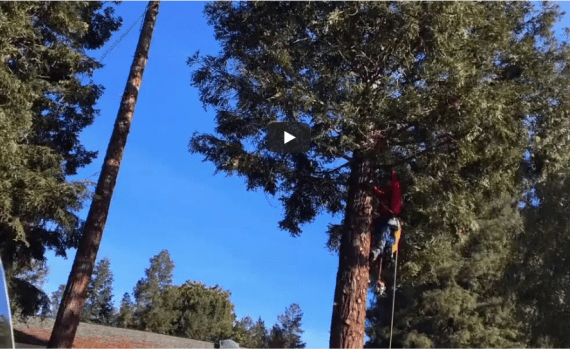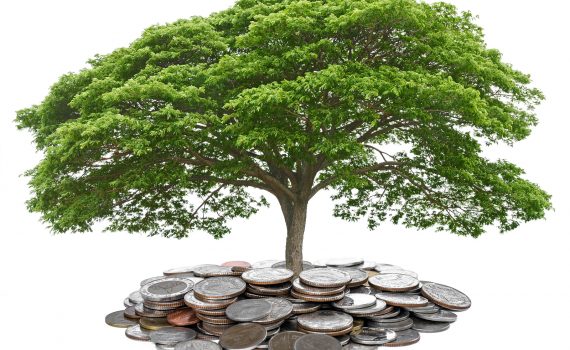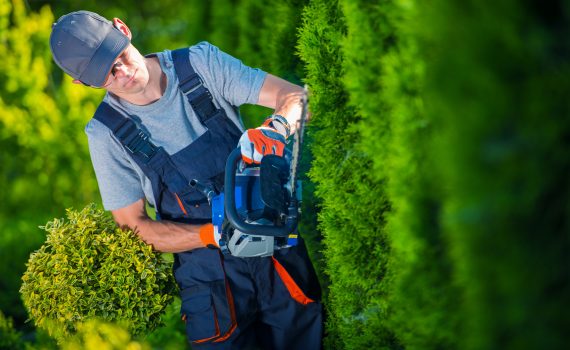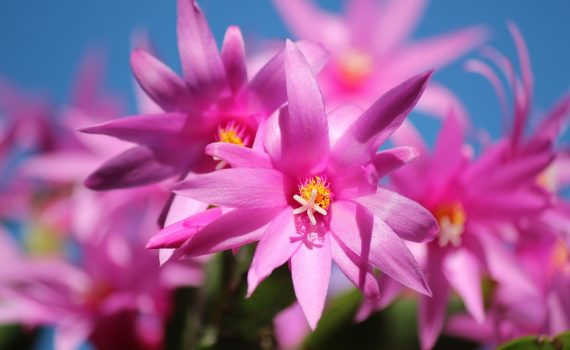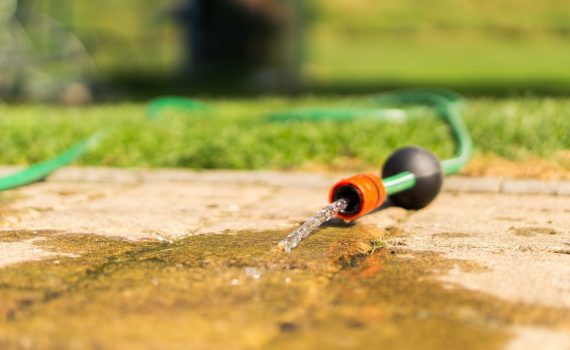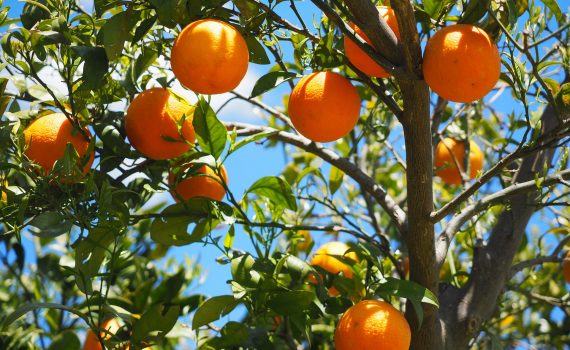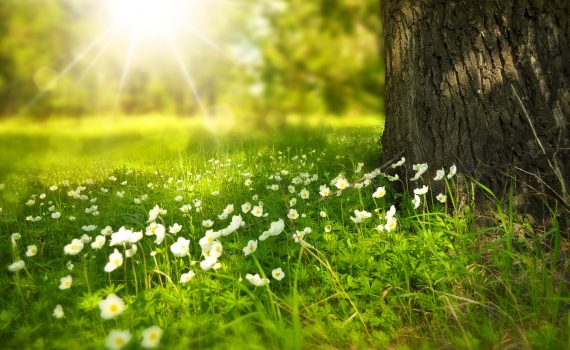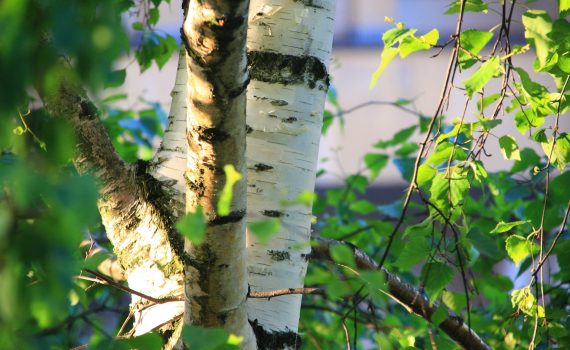The following is a video of a redwood being removed in Danville, California.
Berkeley Tree Removal
North Berkeley removal of oak canopy leaving main trunk from wildlife habitat.
5 Ways To Save Time And Money on Lawn Care
If you have a grass lawn at your home in California, chances are it’s looking a little worse for wear after the hot, dry summer we’ve had. With winter around the corner, you may need to give your lawn a little TLC to bring it back to life. But lawn care can be a time consuming and money wasting affair, particularly when environmental conditions are no longer supporting healthy lawn growth. So what can you do to reduce the time and money you spend on lawn care while still keeping your garden looking beautiful? Here we look at 5 ways to save money and time on lawn care, so you can spend more time enjoying your garden, and less time fixing it.
- Use Smart Watering Techniques
Knowing how to water your garden properly can not only help maintain the health of your lawn and trees, it can also help to save time and precious water sources. Water your lawn less frequently, but water deeply, allowing water to soak deep into the soil and directly feed the roots.
Tree death and tree removal during hot, dry weather can leave lawns exposed and disposed to more rapid damage. As the lawn is often an open and exposed patch of ground, it’s highly prone to evaporation. That’s why it’s important to water at a time when there isn’t much sun, such as very early in the morning or late in the afternoon, to prevent evaporative water loss.
- Mulch Your Lawn
Mulching your lawn, flower beds and tree roots is essential for maintaining moisture and nutrient levels in the soil, and also helps you save time feeding and watering your garden. Tree stump removal and tree stump grinding often leaves behind quality mulch that can be used in your garden. Mulch can be delivered by your local arborist, or you can use the clippings from tree trimmings or grass cuttings.
- Choose Low Maintenance Grass Varieties
95% of American lawns have bluegrass for their lawn, which is a particularly thirsty variety that requires a lot of water and care. Slow growth, drought resistant grasses are lower maintenance and make lawn car easier, and these include varieties such as Zoysia, Buffalo, Bermuda, St Augustine and Bahia grass.
- Try A Grass Free ‘Lawn’
If you really want to reduce the cost and maintenance time for your lawn, perhaps the best option is to forego the grass altogether and opt for a grass free landscaping solution. Placing some drought resistant trees and plants in your garden and replacing grass ground cover with stones, pebbles, succulents, ‘hardscapes’ or artificial grass can help to foster a lower maintenance garden that is just as beautiful and easy to enjoy.
- Check Regularly For Pests and Damage
Lawns can quickly suffer under the effects of pests, and so should be checked regularly for signs of damage. Professional lawn services can help you quickly identify lawn issues and provide a solution if you need it. Quick treatment can save lawns, trees and plants in your garden and save you expense and trouble in the long run.
If excessive time and money investments for lawn care are getting you down, think about utilizing these 5 ways to reduce cost and time spent on lawn care in your home garden.
What’s The Difference Between a Landscaper and an Arborist?
Many homeowners may not put much thought into the differences between landscapers and arborists. They both do work in the garden and make your yard look beautiful, so it’s the same job right? Actually landscaping and arboriculture are two very different and distinct fields of work. Hiring the wrong professional for the job could lead you to having issues with your yard or trees, or even worse, cause damage or injury to people, property, or your yard. By understanding the unique capabilities and expertise of both landscapers and arborists, you can choose the right professional for the work you need done in your yard.
Difference in Scope of Practice
The difference between in the expertise offered by both landscapers and arborists lies in their scope of practice. Landscapers are mostly involved in designing and installing landscapes, installing hardscapes, lawn care, installation and maintenance of lawn irrigation, mulching, garden bed care and maintenance and sometimes pruning shrubs and small plants.
On the other hand, arborists are primarily concerned with the details of tree and plant care, such as caring for mature trees, tree removal, pruning, cabling, stump grinding, checking for pests and diseases, along with other areas of practice.
Skills and Training
It’s important to distinguish between these different scopes of practice for both landscapers and arborists, because it indicates what skills and training they have each undergone, and their areas of specialty. The skills and background of landscapers makes them knowledgable in how to make your yard look its best, specializing in lawn care services, lawn treatment, and yard maintenance, to help keep your garden looking beautiful and in good shape.
On the other hand, if your trees and plants are looking dead, dying or sick, or you need help with tree pruning or tree removal, a certified arborist should be the first person you call every time. Arborists have an in-depth knowledge of tree care theory and techniques to help keep your trees healthy and your environment safe.
Use Of Specialized Tools
One of the many reasons why it is important to call a certified arborist for tree care is because of the need to use specialized tools in the correct manner to effectively prune or remove trees. Certified arborists are properly trained in tool use, and are accustomed to using equipment such as chippers or chainsaws. However, in inexperienced hands this equipment can be extremely dangerous.
Landscapers may not be accustomed to using this kind of specialized equipment, nor may they be experienced in working on difficult projects such as pruning or removing tall or large trees. This is where the skills and training of a qualified arborist are indispensable.
Benefits of Collaboration
For the best results in your yard or garden, there’s no doubt that both landscapers and arborists should work together to produce truly beautiful landscapes and outstanding results for your trees and plants.
If your garden needs a redesign or overhaul, contact a landscaper. If your trees or plants need work, call an arborist. But for truly beautiful, healthy and safe yards, get a landscaper and an arborist to work together to bring the best of both worlds to your garden.
What Are The Most Drought Resistant Plants and Trees?
With drought spreading across most of California, and now affecting many other states across the U.S. as well, many more homeowners are looking for alternatives to keeping their homes and gardens beautiful while minimizing water usage. One of the best ways to do this is to switch out your lawn and water hungry plants for drought tolerant plants, trees, and landscapes. A drought tolerant landscape designed by a skilled arborist will be resistant to water shortages and look beautiful all year round. Here we look at how the drought situation might affect you and your garden, and how you can maintain a beautiful landscape with drought resistant trees and plants.
Drought Affected Areas
If you’re living in California, you may be all too familiar with the effects of drought, however drought conditions are also prevalent in over 30 states across the U.S. More than half of California is currently in a state of drought, with 59% of the state affected. Nearby Nevada is also affected in 22% of the state, while 28% of Georgia, 40% of Massachusetts, and 27% of New York is also affected by drought. Regardless of the dry conditions in these states, the right knowledge of tree care and low water plants and trees can help to maintain a beautiful outdoor environment, even in drought conditions.
Drought Resistant Trees
Tree trimming and tree pruning can help to reduce water consumption by trees, however it can also result in tree death and the need for tree removal. A better solution is to plant drought resistant trees which have leaves that use water efficiently, waxy coatings that protect from water loss, and extensive root systems to maximize water absorption. While a tree company or certified arborist can provide expert advice on which kind of trees would best suit your environment and aesthetic taste, some of the drought resistant trees suitable for California and the Bay Area include Western sycamore, California oak, Southern magnolia, Eldarica pine, Kentucky coffee tree, White oak, Northern red oak, Eastern red cedar, and the Thornless honeylocust.
Furthermore, the California sycamore and Holly oak are drought resistant, but only once established. Choose drought resistant trees, or contact a tree cutting service to prune your trees safely and appropriately in order to keep your garden drought friendly.
Drought Resistant Plants
Drought resistant plants can also feature in a drought resistant garden, and they make the perfect addition to homes with smaller available garden space. Drought resistant flowers such as hawthorns and crepe myrtle, drought tolerant succulents and dry climate grasses all contribute to added variety and color in a drought resistant garden.
Drought Resistant Landscaping
Lush, green lawns are great, but not during a drought. Why let your grass go brown and die when you can swap out your thirsty lawn for a drought resistant landscape? If you want to maintain the appearance of green grass without the water consumption, realistic artificial grass could be the ideal solution. Gravel or stone landscapes interspersed with succulents and other drought resistant plants also look stunning and add a modern landscape feature to the home. Ornamental grasses and perennial flowering plants add a touch of variety and color.
Although drought conditions look set to stay for a while, with the assistance of a professional arborist to build the perfect drought resistant garden for your home, you can enjoy a beautiful landscape year from season to season.
4 Important Reasons You Should Leave Tree Work to the Professionals
Many homeowners like to do their own DIY work around the house, and many may see money spent on professional tree service and arborists as ‘wasted’. Many feel that when it comes to tree trimming and pruning in California – how hard can it be? But the reality is that tree care is hardly as simple as it looks and in fact involves a number of considerations and precautions many DIYers fail to take into account, and these could end up costing you in the long run. Here we look at 4 of the most important reasons you should always leave tree care to the professionals.
Arborists Have Essential Tree Knowledge
Do you know and understand how every tree and plant should be cared for in your garden to promote its optimal health? Are you familiar with when and how each type of tree variety should be pruned? Would you recognize critical tree damage such as weakened tree branches, tree and plant pests and tree diseases? A certified arborist is trained and experienced in these and other aspects of arboriculture and tree care in order to provide relevant and targeted tree care to ensure tree health.
Arborists often pick up underlying issues when working with your trees, such as tree diseases and pest you may not have noticed, or the need for cabling and bracing to support tree branches and protect your property. Having a qualified arborist work on your trees allows you to receive an expert opinion on tree care and health.
Improper Tool Use
Homeowners completing DIY jobs on their trees and plants are often at risk of injury and damage to property due to improper use of tools. Power tools such as chainsaws are incredibly dangerous and difficult to use, and improper use or use of a blunt or damaged blade can cause major issues. Ladders are another dangerous tool that are improperly used in DIY tree trimming, and they can often be too short, set on unstable ground, or supported by a faulty limb.
Professional arborists also have an collection of specialized tools such as stump grinders, wood chippers, and aerial lifts which provide the easiest way to remove tree stumps and allow some of the more complex and difficult jobs to be completed more quickly and efficiently.
Personal and Property Safety
Improper use of tools, a failure to accurately assess and understand environmental conditions and a lack of adequate support or other people to work with can all result in large risks to the DIY tree trimmer and their property when completing a DIY tree care job. Removing high or large limbs, using ladders and power tools and uprooting a tree are all tasks that present significant risk. DIYers often suffer serious injuries or fatalities from taking on difficult tree work, particularly alone, due to risks from electrical wires, falls and dropped branches.
Falling branches, removing trees and failure to recognize root damage can also result in damage to your home and neighboring properties. Using a professional Bay Area tree care company reduces these risks to personal safety and property.
Insurance
If you’re planning to be your own tree trimmer, you might want to think about what the consequences will be if something does go wrong and whether it’s worth it. If damage does occur during DIY work, the homeowner will be the one responsible. Reliable arborists complete work in your yard with personal and property damage insurance so you can have peace of mind.
For safe work and the most comprehensive and detailed tree care, always choose a professional, qualified arborist for completing work in your yard.
How To Conserve Water In Your Garden This Summer
Summer is a time when a lot of plants and trees are putting forth new growth and even providing fruit. However, the hot summer weather and increased growth means that plants also have an increased need for water. As much of California is still experiencing drought, and the drought conditions are being felt in local areas such as Walnut Creek, Concord, Berkeley and Pleasant Hill, it’s important for homeowners and gardeners to be aware of how to prepare their trees and gardens for the drought, while also conserving water and using a more environmentally sustainable approach. Here we look at some tips for plant and tree care to conserve water and maximize your garden’s health in summer.
Water the Right Amount
If you are under-watering or over-watering your garden, you not only pose the risk of damaging your plants, you may also simply be wasting water and doing more work than you need to. With proper tree identification from an experienced tree specialist, you can establish exactly how frequently you should be watering your plants and trees for their optimal health. Once this schedule has been established, stick to a routine of watering your plants only when they need it.
Observe Your Plants and Trees
One of the ways you can establish how often your plants need watering is by observing your plants and trees for signs of water loss such as dryness and wilting. Plants with larger leaves lose water more quickly than plants with smaller leaves, so use large-leaved plants in your garden as an indicator for when you should water.
Trees that aren’t watered adequately can drop more leaves and branches than necessary, which in extreme cases can require cabling and bracing. If you’re not sure how often your tree should be watered, consult a tree doctor for specialized advice.
Water Deeply
If you’re wondering exactly how to water trees in order to conserve water, deep watering is the method for you. Deep watering is a technique that helps essential hydration for plants reach deep into the roots up to 8-12 inches below the ground, rather than just wetting the surface. This is particularly important in summer, as huge water losses due to evaporation can occur in hot weather. It’s better to water plants and trees more heavily on less days of the week than watering just a little bit every day.
Deep watering also helps tree and plant roots reach deeper into the soil for greater stability and strength, and avoids wetting the leaves of the trees and shrubs which can give rise to fungal disease.
Use Mulch
Once you have thoroughly watered your tree and plant roots it’s important to cover the root area in mulch in order to limit evaporative water losses and protect tree roots from the heat. Mulch can be provided by your local tree specialist to act as an insulating cover that conserves water in the soil and also helps to optimize soil health, which is essential in drought conditions.
Drought Resistant Plants
One of the best ways to conserve water in your garden is to plant drought resistant plants and shrubs which are tolerant of low water conditions and more suited to the native environment. Of course, pruning trees can reduce their water usage, but it can also lead to the tree dying or failing to grow.
If you want to make you garden more drought tolerant, consult with a qualified arborist to choose plants that both help to conserve precious water and fit into your landscape.
With these tips you can conserve water in the garden and create a beautiful landscape that flourishes even in drought conditions.
3 Essential Tips for Fruit Tree Care in Summer
With summer here, your fruit trees are hopefully putting forth a lot of new growth and some of that delicious summer fruit is already starting to appear on your tree. Summer is when most fruit trees really flourish into their full beauty, but it’s also a time when special care needs to be taken to properly nurture your fruit trees and get the best results out of them. With careful attention and the skilled assistance of a qualified arborist where necessary, you can help your trees to produce the best summer fruit you’ve ever had while keeping your tree happy and healthy.
Pruning in Summer
If you’re wondering whether you can prune fruit trees in summer the answer is yes, although with some caveats. While conventionally, most fruit tree pruning is done in late winter, there is a place for pruning fruits trees at home in summer. This especially applies to dwarf fruit trees, where summer pruning helps to establish control, and most garden apple trees and pear trees are dwarf stock nowadays.
Pruning fruit trees in summer has many advantages. Firstly, it can help to correct what needs correcting, removing dead and damaged section of the tree and establishing structure. Pruning excess growth and thinning the fruit can help direct the trees energy towards developing the fruit on fast growing trees. Pruning can also increase light exposure which prevents disease and helps to mature the fruit.
However, over-pruning in summer, or pruning when your tree is tip bearing or weak can do more damage than good. If you’re unsure, call in your local tree specialist to inspect the tree and provide an expert tree trimming for the best results.
Protecting Your Fruit Trees
Summer can be a harsh time for trees and plants, especially in drought conditions such as we are experiencing now in Walnut Creek and across the Bay Area. Regularly watering your trees and applying mulch to protect the roots and prevent water loss is the most environmentally sustainable and tree friendly way to nurture your fruit trees through summer.
Tree services companies can provide mulch fresh to your door, so you can keep your fruit trees healthy all summer.
Inspecting Fruit Trees
When fruits begin to appear on the tree, it’s also likely that pests and diseases could appear as well. Inspect the bark, branches, leaves and developing fruits on your fruit trees often and check for signs of insects and diseases.
Catching a problem early can help to save a lot of time and damage rather than letting the problem get out of control before you take action. If you’re unsure about how to inspect fruit trees or you see the initial signs of a problem starting, contact a fruit tree specialist to come and inspect the tree and offer advice on how to remedy the problem while conserving the tree’s health and as much fruit as possible.
With these tips you can nurture your fruit trees through the summer and enjoy a delicious crop of rich, mature fruit, while keeping your tree healthy for the next season as well.
The Ultimate Guide To Summer Tree Care
Summer is here and with the mercury rising and drought still persisting in California, tree care should be a top priority for anyone who wants to see their trees survive and flourish. By arranging expert tree inspection and giving special attention to tree care and yard management, you can provide your trees the best chance of being ready for the hottest days of summer. With the help of a professional arborist, you can keep your trees and your property safe this summer with necessary tree cutting, professional tree specialist care and expert garden advice, all from your local tree pruning company.
Have Trees Checked for Pests
While spring is a much more common time for pests to appear on your trees and plants, some pests such as bagworms and Japanese beetles are more likely to appear in summer, and any unresolved pest situation that may have arisen in the spring months could continue into summer too.
If you notice increased insect activity on your trees or shrubs, or you’re concerned about pest infestation, the best option is to contact a certified arborist to inspect your trees and provide the necessary treatment and care to resolve the pest problem and protect your trees.
Droughts Need Water
While trees may not need to be watered in cooler or damp climates, when drought conditions occur many trees and shrubs need extra water to survive. It’s important to water trees and shrubs correctly to avoid wasting water, or inadvertently under- or over-watering the plants.
Check the weather forecast as water may not be needed if rain is due to arrive. Water your gardens deeply and soak the soil with about 1 inch of water, doing this less often such as a few times a week, rather than small amounts more frequently, such as every day. Choose to water at times of the day when water is less likely to be lost to evaporation, such as early in the morning or late afternoon.
Just Add Mulch
Mulching is a great way to keep trees and shrubs protected in summer, and also helps to preserve water and maintain soil health and nutrition. Your local tree company can provide mulch delivered directly to your garden, that provides huge returns for the health of your trees and the quality of your soil.
You can apply a mulch ring around your trees that provides protection and nourishment to the roots while preserving water and keeping your trees hydrated. Ensure your mulch rings are at least 2 inches thick, and add more mulch if necessary.
Professional Care
Is your tree dead, dying, diseased or does it have weak branches? For trees that are already frail surviving a hot, dry summer can be just too much, and they often die or drop branches, destroying nearby property and ruining the look of your yard.
Have a professional tree surgeon or qualified arborist make a visit to your yard to inspect your trees, provide expert advice and apply cabling and bracing to weak tree branches if necessary. A tree specialist can also identify dead or dying trees and provide safe and efficient removal in order to protect your property and your garden.
With these tips for top tree care this summer, you can enjoy a flourishing garden, even during the hottest days of the year.
Is My Oak or Birch Tree Dying? How Can I Save My Tree?
There’s nothing worse than realizing that one of the trees in your yard may be diseased or dying. Not only is there the loss of the tree to take into account and the effect that will have on your garden and landscape, there is also the difficulty of having a dying tree removed. There has recently been an increase in oak and birch trees dying the Bay Area, so if you have one of these trees in your yard, now is the time to perform a checkup and get some essential tree care for your beloved birch and oak trees.
Tree Identification
The oak tree and the birch tree are two of the most popular California trees, renowned for their beauty and stature. Birch trees are popular among homeowners for their beautiful and characteristic fine bark, moderate size and elegant branches. The oak tree is a classic American tree, with characteristic leaves and over 400 species. If you think you might have one of these beautiful trees in your garden but you aren’t sure, a skilled arborist can help you accurately identify which species of tree you have, and the best way to care for each tree as well.
Birch Tree Care
Birch trees are beautiful and elegant trees that help to provide structure and shade in moderate sized spaces. However, due to their shallow root systems, they are especially vulnerable to heat and drought. A position where the birch tree’s roots are shaded, yet where adequate sunlight can still reach the canopy, is ideal for these delicate ornamentals.
Trimming a birch tree can be most effectively done by a tree specialist, to shape and nurture your tree according to its unique needs for the best results. Regular tree maintenance including monitoring, pruning and watering helps to reduce the chance of pest infestation and maintains the health of the birch tree. Birch trees also respond well to having mulch placed around the root systems, to help maintain a more stable soil temperature.
Oak Tree Care
This noble American tree flourishes with regular watering, pruning and fertilizer, which will help to produce a large and beautiful tree that will be the centerpiece of your landscape. Because oak trees can be large and long lived, it’s critical to provide regular tree care and maintenance to your oak to correctly guide its growth and prevent disease and pests.
A skilled arborist can prune your young oak tree to produce a strong central leader branch, while removing dead and broken branches on older trees is essential for maintain structure and integrity. Oak tree should regularly be monitored for disease and pests as well, as they are susceptible to a range of diseases and pests, and left untreated affected trees could die.
Signs of Tree Pests or Disease
Spending some time in your garden taking care of your trees, or regularly enlisting the assistance of a professional arborist should keep tree diseases and pests at bay, or at least help you to recognize them as soon as possible.
Some common signs of problems include –
- Visible bugs, beetles, worms, caterpillars or other insects in large numbers
- Discolored or spotted foliage
- Dead or dying foliage or branches
- Thinning canopy
- Shelf mushrooms
- Wet patches on trunk
- White coating
If you notice any of these symptoms on your oak or birch tree, call your local professional arborists immediately for accurate diagnosis and the appropriate care to heal or remove your tree.
 Bringing Sexy Back Into Your Yards
Bringing Sexy Back Into Your Yards 
